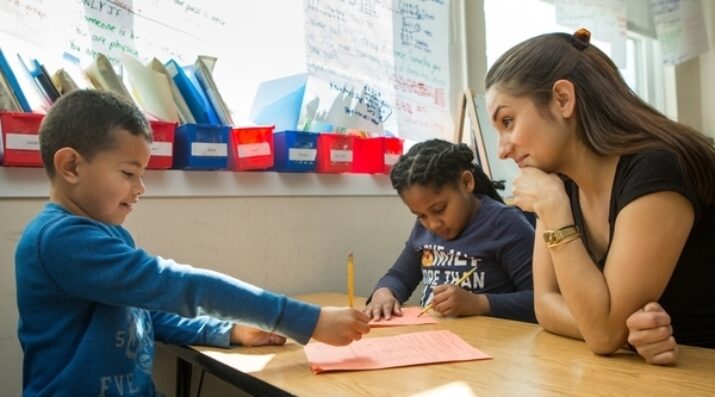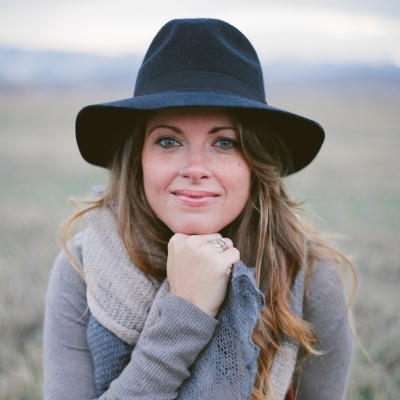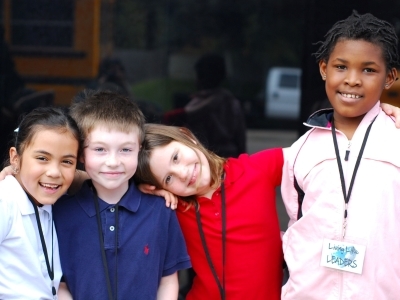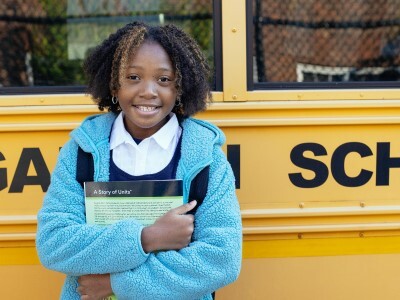What About Teaching Actually Matters?
Topics

When educators design and create new schools, and live next gen learning themselves, they take the lead in growing next gen learning across the nation. Other educators don’t simply follow and adopt; next gen learning depends on personal and community agency—the will to own the change, fueled by the desire to learn from and with others. Networks and policy play important roles in enabling grassroots approaches to change.
What can teachers look for in a K-12 education system of urgency, efficiency, and transactional outcomes to know they are keeping students' and their own humanity at the center?
I used to have a blog with the tagline, “All I have to give is who I am.” Dramatic, yes. Also, true.
The only thing unique amongst all the books, all the social media, all the online content, all the A.I., is me.
I’m the only me there will ever be.
When I first started teaching high school, back when I was 22, I brought passion but little sense of my “me-ness” (or what my therapist calls my “ish.” As in, when I’m being most myself, I’m being my most Trinity-ish self). I didn’t know my “ish,”—my voice, my needs, or my boundaries. I was trying to be a “good teacher,” something I could not define but felt certain I was missing. With each passing year, the students schooled me in the truth that what they needed, more than my knowledge or good teaching skills, was to feel heard and seen, to feel connected to someone who could hold the line when they forgot how.
I spent 11 years in public education, teaching online, brick-and-mortar, and blending learning courses before I lost my job last year due to lack of funding. It’s been a year of reflecting on what about this all-consuming career felt so good and what felt so hard.
Teaching is a difficult job for many reasons, but it’s also rewarding in all the ways that matter most, and I think that’s why teachers stay.
We have big hearts.
We get into teaching because we care to care for kids with our whole hearts. And then our hearts get exploited, and we end up saying yes to everything, at the expense of our well-being. We end up too burnt out to get the help we need to not be burnt out. And if we do admit we need help, we risk undermining our qualification to do our job.
It feels like an impossible barter: keep our jobs and lose ourselves, or keep ourselves and lose our jobs. Keeping the job means we can’t listen to our needs because that means less time spent on our students. If we do something for ourselves, we navigate a backlash of guilt. Whoever stays longest after school doing unpaid labor wins points, and whoever leaves their classroom to go pee loses. Teacher dehydration is a thing.
Education is not a system that favors those it purports to serve. It profits off of teachers’ willingness to not take care of ourselves, and then offers professional development on how to take care of ourselves.
This is what sucks about reading teaching advice with words like “balance” in the title. We are trying, but the ground is not level.
The odds are not stacked in our favor, nor is our labor compensated the way it should be. As teachers, we deal with bureaucracy, institutional abuse of power, endless workload, endless paperwork, inadequate resources, poor physical space, looming threats to our safety (cue the active shooter drills), large class sizes, lack of mentoring, student behavioral challenges, increasing demand to be all things to all people while navigating parental criticism and watchdogging, curricular censorship, high stakes testing expectations, lack of recognition and celebration, and incongruence between what we are told will happen and what actually happens (or doesn’t).
We work in a system where it’s not okay to name that things are not okay. A system where it’s not okay to not be okay.
And yet, if we are not ok, how can anything really be working?
Our students learn from us what it looks like to be human. We have this incredible chance to be in this baffling business of becoming more alive, more aligned, more in our “ish” together. When it’s working, there’s nothing quite like it.
When it’s not, it’s a recipe for burnout.
When we get out of tune with our “ish,” the students can feel it—they can feel the dissonance and their nervous systems interpret the dissonance as a potential threat (like the way your brain feels when you hear an unresolved chord). The reasoning and relational centers of their brains shut down and they move into dysregulation. A human in dysregulation cannot learn.
Plus, we co-regulate each other, so if we get dysregulated, we impact the students because they are attuning to us, the guide in the room (for more on how attunement affects educational success, read about Dr. Bruce Perry’s neurosequential model of the 3 R’s: regulate, relate, and reason).
Anytime we teachers choose to care for ourselves, to treat ourselves like we are the thing that matters most, we’re able to then show up in ways that help our students know they’re also what matters most. Together we create mutual care and co-regulation, learning and teaching in this infinity loop of reciprocity. It’s the best feeling—this sense of being curious readers of each other’s lives, a devoted band of humans committing to the work of exploration and growth alongside each other.
It’s easy to forget about what really matters in teaching.
It’s easy to get overwhelmed by the sheer responsibility of the job and the demand to produce quantifiable results. It can feel like swimming upstream to keep the students at the center, to not be sucked into the whirlpool of urgent efficiency and transactional outcomes. And even when we do manage to keep the students at the center, the job can still feel thankless and results-less, like swimming in circles. The lack of confirmation that what we’re doing is working makes us feel like it’s not working, so we work harder. The students deserve our very best, and the needs are endless. And around and around we go.
This is what I’ve been reflecting on: when do we know if what we’re doing is “working?” The long-game of teaching makes it hard to know, so if we can’t know if what we’re doing matters, then what matters?
To sustain myself in this career, I had to redefine when something was “working.” Working became things like: A student who normally didn’t show up to class, showed up. A student falling in love with their first book. A student wanting to eat lunch with me because they felt safe to talk in a smaller environment and they knew that about themselves, and then they knew how to advocate for what they needed. A student risking writing their first poem and then reading it in front of the class, and the whole class clapping, like they were saying, “Yes, we see you doing a brave thing. You are not alone. Your voice matters.” So many tiny things. So many pieces of what matters.
I think the work is “working” when we, as teachers, create the kinds of classrooms where it’s okay to risk seeing and being seen, where it’s okay to practice becoming more human.
Remember that Maya Angelou quotation, “People will forget what you said, people will forget what you did, but people will never forget how you made them feel?”
When we are resourced and in our “ish,” we can be present to see our students, to hold the line for them, to hold their gaze. We can help them feel seen because we know how to do it, because we’ve been practicing.
When we teachers treat ourselves like we are the thing that matters, we model for our students the most important lesson we could ever offer: they are the thing that matters.
And when a student learns that they are the thing that matters, guess what happens? They treat other people like they are the thing that matters.
It’s love. It’s community. It’s taking care of each other. It’s treating every living thing like they are the thing that matters. It’s making this world more joyful, loving, and free.
And around and around we go.
Photo at top by Allison Shelley/The Verbatim Agency for EDUimages, CC BY-NC 4.0




